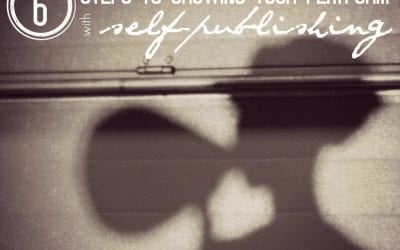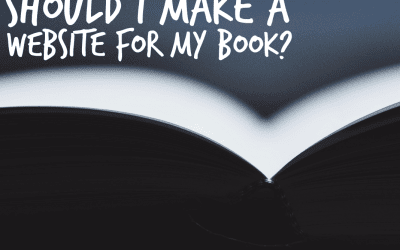Platform. That’s the big buzzword in publishing these days. You’ve got to build your platform if you’re ever going to be successful in publishing. At least that’s what everyone says, right?
But what if e-book publishing is itself the platform and not the result of building one?
Let me explain by throwing some numbers out there from a recent experience with an author I’ve been working with over the last year or so.
In 2012, Alex Terego had a total of 5 books, all self-published. Throughout the entire year, he sold approximately two dozen copies of his books across all platforms. They were published in print through Createspace, and in e-book format on Amazon Kindle, Barnes & Noble for Nook, and in the iTunes store for books.
If you looked at his blog and social media platform, you’d probably say that this makes perfect sense. He was getting about 15-20 page views per day on the blog. He had about 20-30 followers on Twitter and around 200 likes on his author page on Facebook. There are a few people listening to him, but it definitely isn’t a powerhouse social media platform.
In 2013, we changed the strategy pretty drastically. And the result was kinda mind-blowing…
Over the next year, the total distribution of his books went to over 4,000 copies!
How did we do that? Yeah, I get that question a lot. Here are some points on what we did, but before I share them, let me say this… we didn’t focus on growing his social media platform. (Insert gasp here.) I know, shocker, huh? In fact, I might point out that his social media platform (which still isn’t huge) is growing more as a result of selling books, and not the other way around.
Revising the Sales Strategy
The first thing we did is evaluate the impact of having the book available for sale on multiple platforms (Kindle, Nook, iTunes, etc). Common sense would say it’s important to have the product listed in as many places as possible. You wouldn’t want to miss any sales due to not having your book in certain stores, right?
Wrong.
In my personal self-publishing experience, Kindle has consistently outsold all other platforms (print, Nook, direct PDF sales, etc) combined by at least 20-to-1. On the surface, it already looked like focusing on Kindle would be a good strategy.
Consider this about the availability of Kindle e-books:
- They can be read on any Kindle device
- Also, can be read on any smartphone or tablet with the FREE Kindle Reading apps
- And, can be read from any computer using the FREE Kindle Cloud Reader
This means that virtually every Internet-connected device can give a reader access to Kindle e-books.
Only iPhone, iPod, and iPad users can read books purchased in the iTunes Bookstore. On the other hand, those same Apple product users can download the free Kindle app on their device and read Kindle books.
Exclusivity Has Its Benefits
Another driving factor in focusing on the Kindle-only approach for e-book publishing is the ability to enroll in the KDP (Kindle Direct Publishing) Select program. This option is available when you grant exclusive e-book delivery rights to Amazon Kindle for 90 days. In return, you’ll get some nice benefits from enrolling in this program:
- Your e-book is available to Amazon Prime members in the lending library. Prime members pay an annual subscription fee in order to get some extra benefits, one of them being the free lending library. It means they can get your book for free for a couple of weeks. Even though they get it for free, Amazon has a fund that they payout from, so you still get royalties when your book is “borrowed,” sometimes more than the actual sales price of the book itself!
- You can offer your e-book as a FREE download. Because the greatest enemy of every author is obscurity, getting you book into people’s hands is a big deal. And offering it for free can do just that. There have also been several studies (including my own personal experience) that point to free promos like this resulting in an increase in paid sales after the promo is complete.
- I’ve also tested the discount promotion tool by offering one of my $2.99 e-books for a reduced price of $0.99 for one week. Even at the discounted price, I’ve earned approximately THREE TIMES the royalty rate compared to non-promo weeks!
Common sense would say that switching to a single delivery platform would drop sales. However, the opposite is true. Opening up new promotional opportunities has allowed us to reach new audiences, resulting in an increase in overall sales!
Working the Amazon Ecosystem
Simply switching to a Kindle-only e-book publishing strategy isn’t enough. You still have to work the system in order to get the full benefit from these tools.
In the case of Alex Terego, the first thing we did was to set up a free promotion schedule. We call it Free Friday. Every Friday we would offer (at least) one of his e-books for free on Kindle. We had enough initially to create a cycle lasting about two months before a piece would come up to be offered for free again.
This helped get more of his books out there to more people.
Most importantly, it started getting his books into the “Customers How Bought This Also Bought” section of the page for other books. The cool thing about downloading a free Kindle book is that you still “buy” it. Your purchase price is $0.00, but you’ve “bought” the book. As a result, Amazon will begin to index that purchase along with other purchases you’ve made and use that data to help other people with similar tastes find new books they might like.
The More, the Merrier… Keep Publishing
The final piece of the strategy with Alex Terego is that we continued to publish new content regularly. Having more content out there for someone to find you can help broaden your exposure. I’ve heard similar feedback from other authors too… some say they didn’t see much traction until they published their fourth (or so) piece.
Having a strong launch plan is important for any book launch project. But remember, Alex Terego never had a huge following to begin with. So there just wasn’t much there to build a launch team with who could help by writing blog posts and building social media buzz.
So we used what we had…
While leveraging free promotions for existing books, we began to offer new books for free at the same time. The plan was to entice people to download BOTH Kindle books for free at the same time. If they did, then BOTH would become part of their purchase history, and build a stronger connection between the “Customers Who Bought…” links. This worked particularly well with getting some of Terego’s books to show up on the page for other books of his. The increased visibility built stronger sales for books with that link on other product pages of his.
Final Thoughts
It doesn’t take a massive platform, or thousands of Twitter followers, or (insert other standards you’ve been holding on to here) in order to be successful with e-book publishing. But it does take some work.
A typical book launch starts with a spike, (some “experts” say) followed by a drop into obscurity after the first 2-3 months. It definitely takes some work, but I’ve found the opposite to be possible! My first self-published work only sold 39 copies in its first month on the market. Total distribution/downloads now exceeds 10,000 copies!
The same principles worked for Alex Terego, blowing away our distribution expectations for that next year.
I know it sounds cliche, but if I can do it, and if I was able to replicate it with others, then you can do it too! I’m even willing to the help you figure it out.
[NEW E-COURSE] 30 Days to #SelfPub: How to Take Charge of Your Publishing Goals https://t.co/HfPFEjWhN3 #write31days #amwriting #nanowrimo pic.twitter.com/ESfVog52wK
— Fistbump Media (@FistbumpMedia) November 1, 2016






Dan, you are the MAN. I love all that you’re doing to help people get their books read and sold. I’ve sent this on to Kimberlee Conway Ireton, whose beautiful new book (a memoir about post-partum depression that she self-published) is moving v-e-r-y slowly. And that’s a shame because it’s really good AND it could really help some people, too.
Thanks Diana! That’s my thing… too many people have such great stories (and ideas) that just need to get out there! And with the changes in the publishing industry, it’s much more realistic to see those things spread. I’d love to chat with Kimberlee sometime to see if there’s a way I could help her!
#fistbump